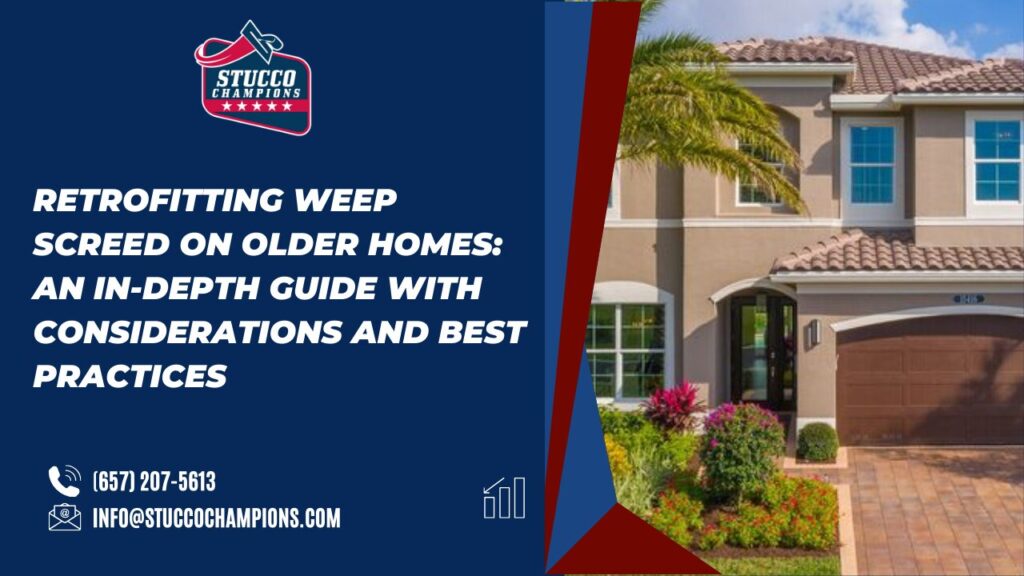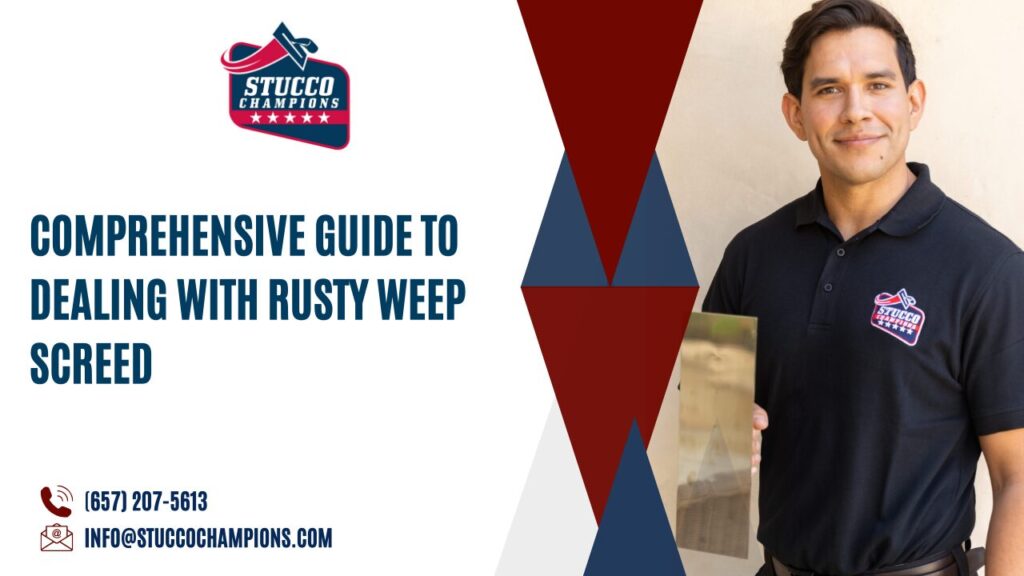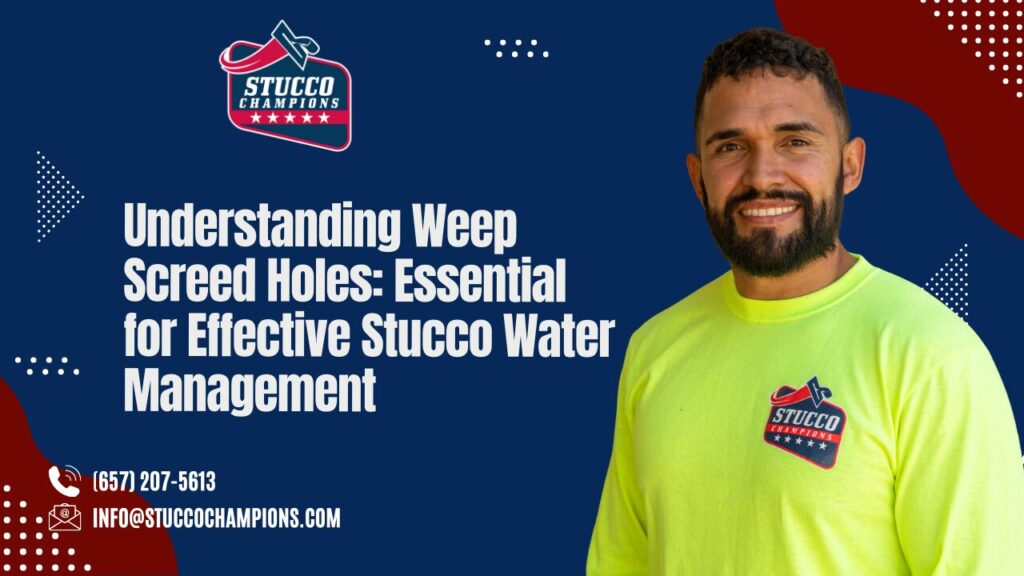Many older houses and buildings lack weep screeds, potentially leading to structural issues. This article delves into retrofitting weep screeds on existing stucco walls, covering the necessary steps and considerations. It’s important to note that retrofitting weep screed involves more than just installation; understanding the implications on wall integrity and moisture management is crucial.
Understanding Weep Screeds
Weep screeds are essential components in stucco systems, providing a termination point at the bottom of walls and facilitating moisture egress. Without them, stucco may run continuously to adjacent surfaces like soil or concrete, leading to potential moisture-related issues.
Investigative Demolition: The First Step
Before retrofitting, locating the bottom plate of the wall is essential. This can be achieved by removing some of the stucco, starting from a corner. A practical approach involves measuring from the inside (bottom of a window to the floor) and replicating the measurement outside. Tools like hammers or rotary hammers are effective in this process, preserving the underlying paper and wire.
Preparation for Weep Screed Installation
Once the foundation and bottom plate junction are located, ensure sufficient space for the weep screed, typically 4 inches above the foundation. This spacing accounts for the 3 1/2″ flange on the weep screed’s backside. Continue removing stucco around the wall to provide a transition point for the new weep screed.
Removing Nails and Staples
Before installing the weep screed, remove all nails and staples holding down the wire and paper. This step is critical as the weep screed must be positioned behind these materials.
Installation of Weep Screed
Install the weep screed, ensuring its bottom is approximately 1 inch below the concrete foundation’s top. This placement is crucial for diverting water away from wooden elements. When nailing the weep screed, do so towards the top of its flange.
Addressing Different Wall Systems
Whether dealing with a 3-coat or 1-coat stucco system, it’s essential to understand the specific installation methods for each. These systems have varying depths and require different cutting techniques for the weep screed.
Continuing the Installation
Proceed to install the weep screed along the entire wall, overlapping each piece by about 1 inch. This ensures comprehensive coverage and effective moisture management.
Counter Flashing Existing Paper & Wire
Next, counter flash the existing paper with new paper, slipping it under the existing layers on the wall. Aim for a minimum overlap of 2 inches to prevent water intrusion. Using smaller paper pieces (12-36″ in length) and overlapping vertical seams by at least 6 inches enhances water resistance.
Adding New Wire
Cut and install a new piece of wire over the patch area, overlapping the existing wire by at least 3 inches. This overlap is crucial for preventing future cracking and ensuring a secure bond for the stucco coats.
Applying the Scratch Coat
Mix base coat material for the scratch coat, aiming for an even layer of approximately 3/8″ to 1/2″. Use a scratcher to create horizontal lines in the base coat, facilitating a strong mechanical bond for the brown coat.
Applying the Brown Coat
After the scratch coat, apply the brown coat to a dampened surface, ensuring it’s flush with the existing finish. This coat requires careful application to ensure uniformity and proper bonding with the scratch coat.
Finishing Steps
Wait about a week after applying the brown coat, keeping it moist for proper curing. The finish coat, usually thinner (1/16″ to 1/8″ thick), follows the same application process but might require multiple layers, depending on the desired finish.
Color Matching Considerations
Finally, matching the existing wall color might necessitate painting or adding color to the finish coat material. Achieving an exact match can be challenging, underscoring the importance of precise color selection and application.
Conclusion
Retrofitting weep screed on older homes is a detailed and technical process, crucial for maintaining the structural integrity and moisture management of stucco walls. While primarily focused on practical installation steps, it’s essential to consider potential downsides, such as moisture entrapment and ventilation issues. Understanding the gap size factors and providing a balanced view of all considerations ensures a comprehensive and effective retrofitting process.
Last week, we shared Optimizing Weep Screed Clearance for Effective Moisture Management, highlighting best practices to ensure proper drainage and extend the life of your stucco system. If you’re aiming to enhance your stucco’s durability, be sure to check out this detailed guide for expert insights!




